The Best Dalmatian Wines: Key Varieties and Appellations Handbook
 Finding the perfect wine can sometimes feel like a treasure hunt. With so many varieties and regions to explore, where do you start? This might be especially true if you’re keen on discovering wines from lesser-known areas.
Finding the perfect wine can sometimes feel like a treasure hunt. With so many varieties and regions to explore, where do you start? This might be especially true if you’re keen on discovering wines from lesser-known areas.
Dalmatian wines, nurtured on Croatia’s sun-kissed coast, offer a world of flavors still waiting to be discovered worldwide.
An exciting fact about this region is that it stretches from Zadar in the north down to Dubrovnik in the south, encompassing an array of islands and coastal cities along the Adriatic Sea.
No cheat code will take you through all of Dalmatia’s wine varieties and appellations, but you can save a lot of time if you focus on the most important.
Hence, The Best Dalmatian Wines – expert tips what to seek out!
Be introduced to favorites like Plavac Mali, a robust red wine that has become almost synonymous with Croatian winemaking tradition, alongside aromatic whites such as Pošip, the most important Dalmatian white variety today.
Also, expect tips on pairing these exquisite wines with traditional Dalmatian cuisine for an authentic taste experience.
Quick Overview of the Dalmatia Wine Region
With its steep slopes over the crystal-clear Adriatic Sea, the Dalmatia wine region is responsible for some of the most unique wines, thanks to its distinct terrain and historical roots that trace back to ancient civilizations.
Importance in the wine industry
The wine industry recognizes Dalmatian wines for their unique contributions and diversity.
Croatia takes pride in having hundreds of distinct grape varieties, many of which are indigenous to Dalmatia. This biodiversity is not just a point of interest but a treasure trove that adds richness and variety to the world’s wine collections.
The commitment of local vintners to preserving these autochthonous grapes has led to international acclaim.
These wines capture the essence of the Dalmatian coast. Awards and recognitions from around the world have honored them for their quality and distinct flavors.
Such recognition places Dalmatian wines among prestigious circles, often compared favorably with most famous wines. Winegrowers here focus on creating tannic reds and aromatic whites by mastering ripening under the Mediterranean sun, often using oak barrels aging for complexity and maturing, although Dalmatia is home to every wine type and style there is.
Key subregions in Dalmatia
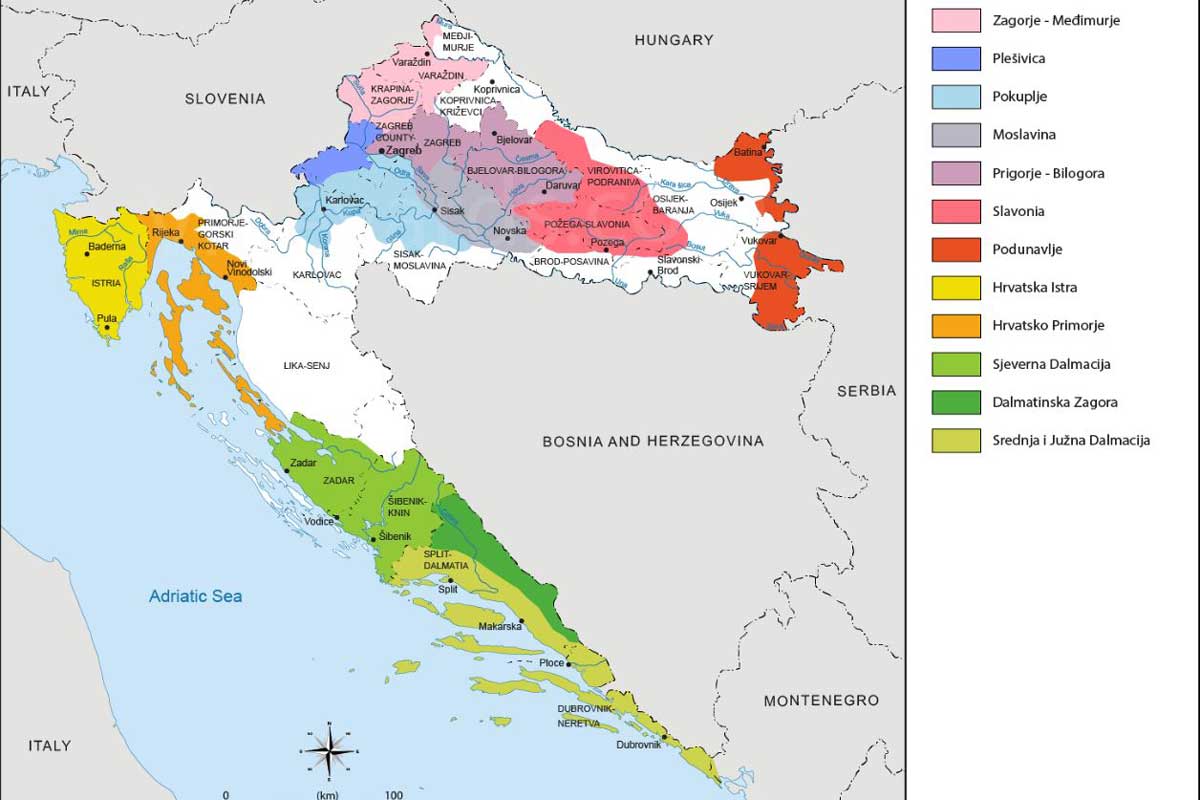
- North Dalmatia
- Central Dalmatia
- South Dalmatia
- Dalmatian Hinterland
North Dalmatia shines with white grapes like Maraština and Debit, alongside reds such as Plavina and Babić.
Central Dalmatia spreads over several islands including Brač, Vis, Hvar, and more. This is where Plavac mali thrives, but also Tribidrag, known as Zinfandel’s cousin under the name Crljenak Kaštelanski. Pošip and Vugava make for the most distinct whites.
South Dalmatia is celebrated for special spots where Plavac mali and Pošip showcase the most desired expression. Here the Pelješac peninsula reigns supreme alongside Korčula Island.
Dalmatian hinterland is best known for producing Trnjak, and Vranac among others in its vineyards, but also many different indigenous white varieties.
Key Dalmatian Wine Varieties
Dalmatian wine varieties offer a rich palette of flavors that excite the palate. From bold reds to refreshing whites, these wines capture the essence of Dalmatia’s sun-soaked vines.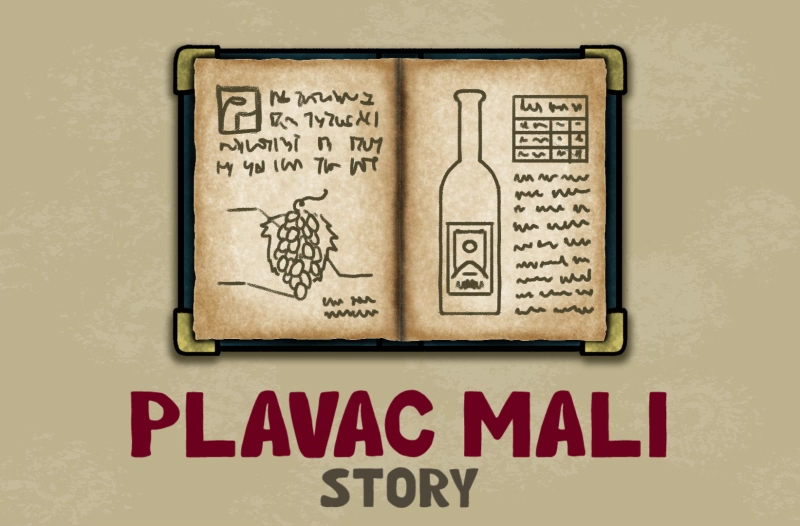
Plavac Mali – The Bold Red Wine Grape
Plavac Mali stands as a celebrated red wine grape of Croatia, thriving in sun-drenched locations including the steep slopes of Dingač, Postup, Ivan Dolac, Murvica, and Stipančić. This hardy variety is known for crafting full-bodied wines that boast expressive tannins and an elevated alcohol content, often reaching up to 15% and more.
Its unique aromas (dark berries, cherry, carob, sage, figs) blend with the complexity brought by aging in the bottle, appealing to those who appreciate a powerful sensory experience.
Emerging vineyards on Komarna or in Northern Dalmatia are gaining recognition for their Plavac Mali vintages, showcasing the adaptability and versatility of this indigenous grape. However, the recognized places for Plavac mali are the vineyards of the Pelješac peninsula and the islands of Brač, Hvar, and Vis.
As a descendant of Tribidrag—globally recognized as Zinfandel—Plavac Mali anchors its roots deep in history while presenting wines that reflect the unique terroir of Dalmatia.
These characteristics make it a staple of southern Croatian wine culture and an ambassador for Dalmatian viticulture on the international stage.
Pošip – A Unique White Wine Variety
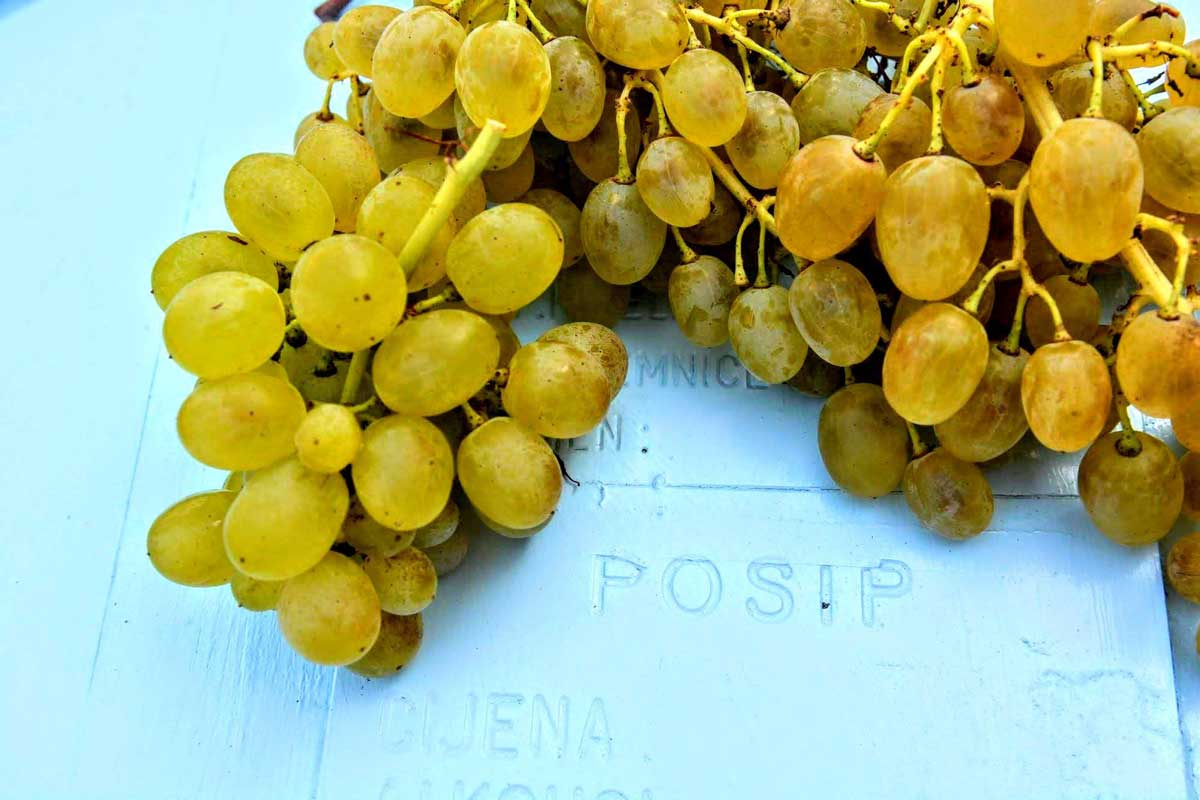
Pošip can give a structured white wine. It has a unique character that lets it age gracefully, revealing deeper flavors over time. Its ability to produce wines with structural depth while maintaining freshness makes it highly valued.
Originally from Korčula, this variety thrives on sun-soiled islands like Korčula, Hvar, or Brač. Of course, many excellent examples could be found everywhere in Dalmatia.
Pairing beautifully not only with traditional cuisine, Pošip highlights the harmony between Dalmatian cuisine and winemaking traditions without overpowering the senses.
Wine lovers appreciate its aromatic profile that blends fruitiness with minerality—a testament to Dalmatia’s terroir.
Tribidrag – The original Zinfandel
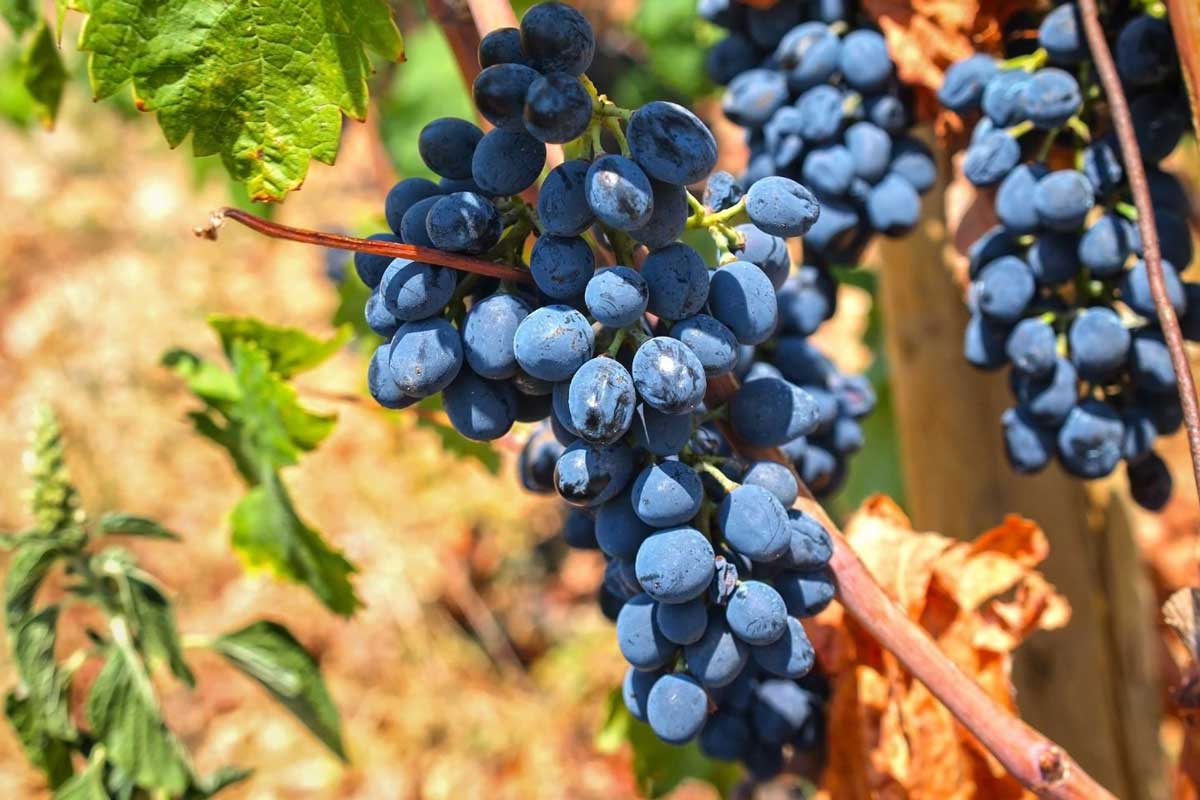
Tribidrag vines once covered Dalmatian landscapes extensively. Thanks to a discovery, it’s becoming widely planted once again.
Also robust, but more fruit-forward, especially in dark and red berry fruit profile, Tribidrag achieves full body and high alcohol wine but is balanced with acidity and softer tannins.
Experts have proven that Tribidrag and Californian Zinfandel share identical DNA, solving a long-standing mystery in viticulture. This discovery highlights the historical importance of Tribidrag and establishes Dalmatia as a significant wine region.
As winemakers continue to explore this grape’s potential, Tribidrag stands as a symbol of resilience and longevity in Dalmatian wine culture. Its revival brings excitement among wine enthusiasts eager to taste heirloom wines bridging past traditions with modern flavors.
Vugava – The aromatic White Wine Gem
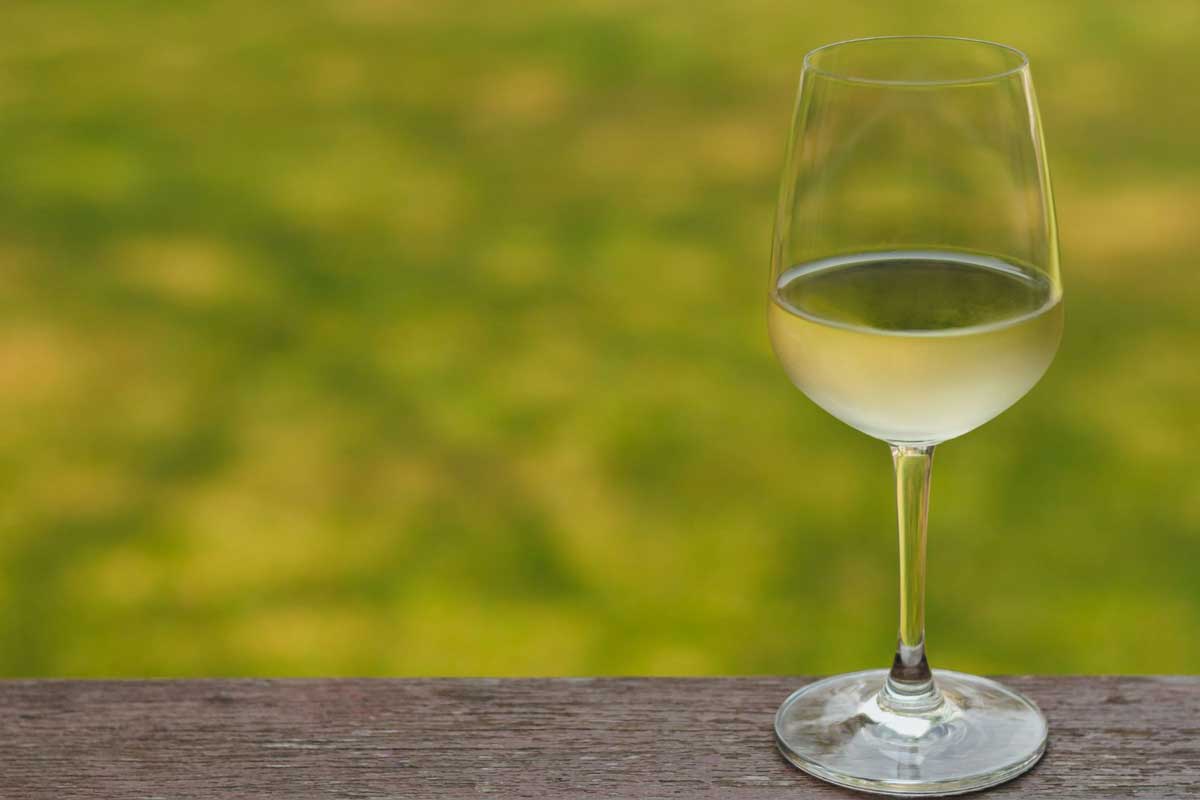
These grapes thrive in the unique climate and soil, contributing to a wine that stands out for its quality and character. Gardeners carefully tend these vines to produce grapes that historically become part of Prošek, a cherished local dessert wine.
Vugava tends to give high-sugar and lower-acidity grapes, quite typical for the sunny subregion it comes from.
Best Vugava wines are intoxicating with Mediterranean flavors. Herbs and spices are intertwined with deep fruit. Each sip offers a taste of Dalmatia’s storied wine heritage, making Vugava a must-try for enthusiasts venturing into Dalmatian viticulture.
Most Famous Wine Appellations
Most exceptional wine-producing areas of Dalmatia, all have a unique story to tell but also the flavor profile that sets them apart. Interestingly, all of these appellations are dedicated to Plavac Mali. Also, all are southern exposure steep slopes over the Adriatic Sea.
Dingač and Postup – World Famous for Plavac Mali
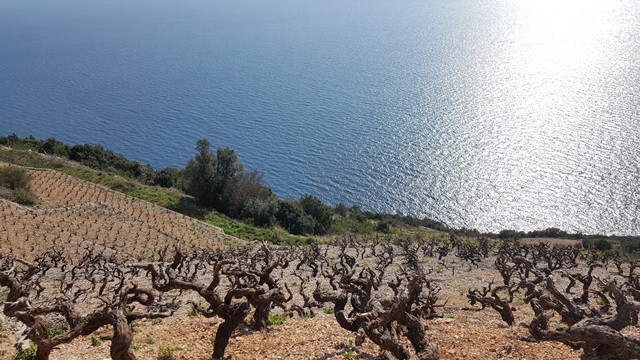
Dingač and Postup are the oldest protected Croatian wine appellations.
Here, vintners master the art of transforming the sun-drenched grapes into full-bodied reds that capture the essence of Dalmatia’s rugged coastlines and steep slopes overlooking the sea.
This hallowed ground produces wines known for their ripeness, richness, and expressive tannins, a testament to the unique terroir and centuries-old traditions of winemaking. Many vineyards are very old and grown in bushes, an archaic form of cultivation.
The process begins in vineyards perched on precipitous hillsides where vines get ample sunlight, aiding in achieving optimal ripeness. Harvesters then carefully select each grape by hand ensuring only the best go into fermenting vessels at nearby wineries.
Every sip offers notes of overripe fruit with undertones from aging in oak barrels which adds to Dingač’s allure among lovers of robust red wines like Merlot or Cabernet Sauvignon seeking depth beyond just sweetness or acids.
Ivan Dolac and St.Nedilja – Renowned for Quality Plavac Mali

The unique position of these vineyards allows grapes to fully ripen under the Dalmatian sun, producing wines with rich flavors and high alcohol content ranging from 13% to 16% and sometimes even more. Traditionally, these wines achieved even better balance with a small percentage of supportive local grapes added to elevate freshness.
Ivan Dolac has earned a reputation for its exceptional red wines, known for their strength, complexity, and depth. These characteristics make Ivan Dolac a must-visit location for wine tourism, inviting enthusiasts to explore its vineyards and taste some of the most respected reds in the region.
Here, vintners use age-old techniques passed down through generations alongside modern knowledge to craft wines that truly reflect the essence of Dalmatia’s winemaking tradition.
Murvica and Stipančić – Steep southern slopes of Brač Island
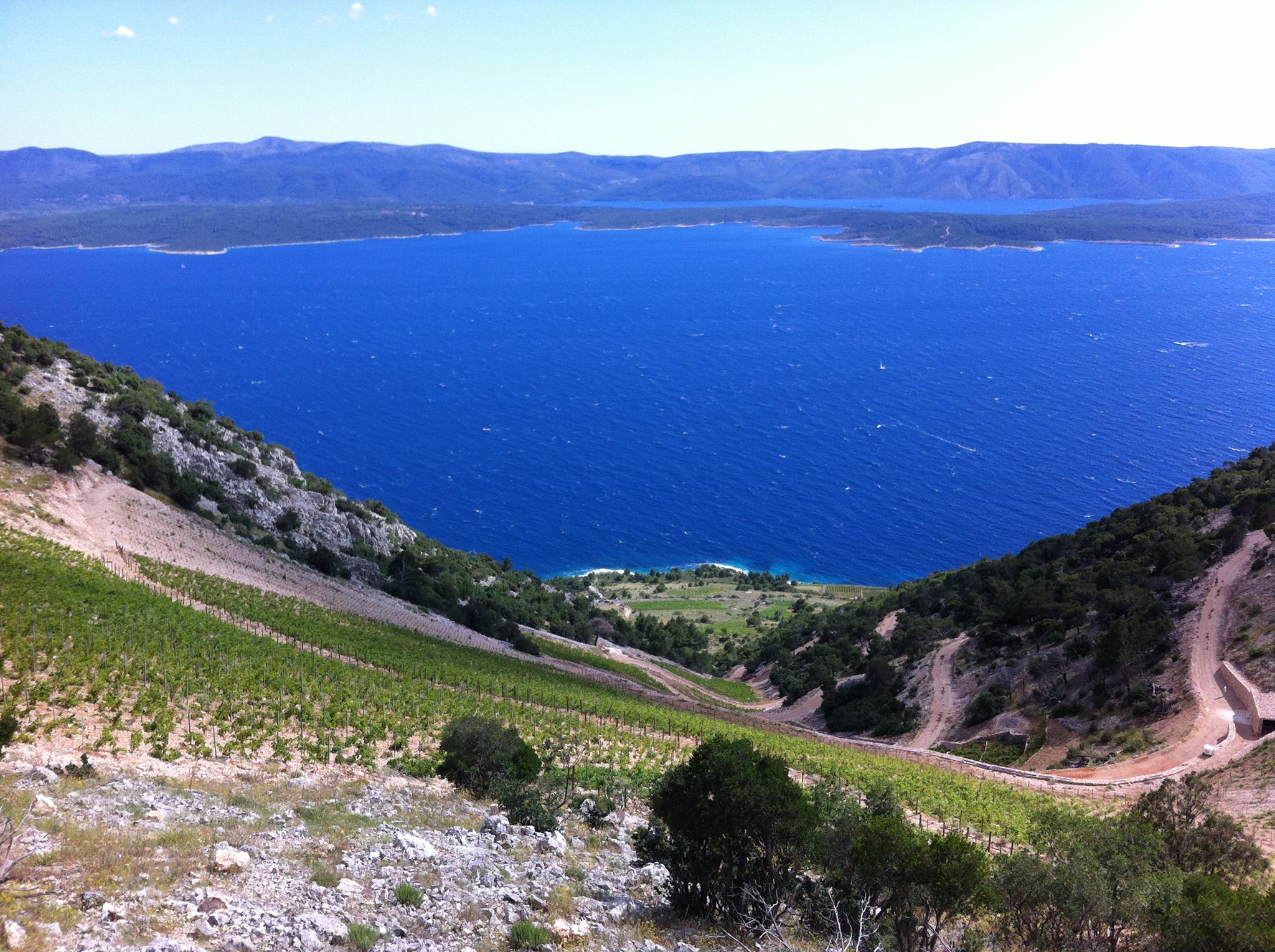
Much like Dingač or Ivan Dolac, this is also limestone soil where only maquis grow. The steepness also ensures everything here is done manually, including harvest of course.
The result is a wine with unique flavors that truly capture the essence of Dalmatian terroir. Plavac Mali from Murvica and Stipančić stands out in the wine world for its depth and complexity.
These areas contribute significantly to the diversity and richness of Dalmatian wines, attracting enthusiasts eager to explore distinct tastes. The challenging terrain adds character to each bottle, reflecting the centuries-old flavors of Brač Island.
Wine Pairing with Dalmatian Cuisine
Pairing wine with Dalmatian dishes turns every meal into a celebration. This is not just an empty phrase, but a way of life. Local wines like Plavac Mali or Pošip elevate the flavors of traditional foods, creating unforgettable dining experiences.
Pasticada with Plavac Mali
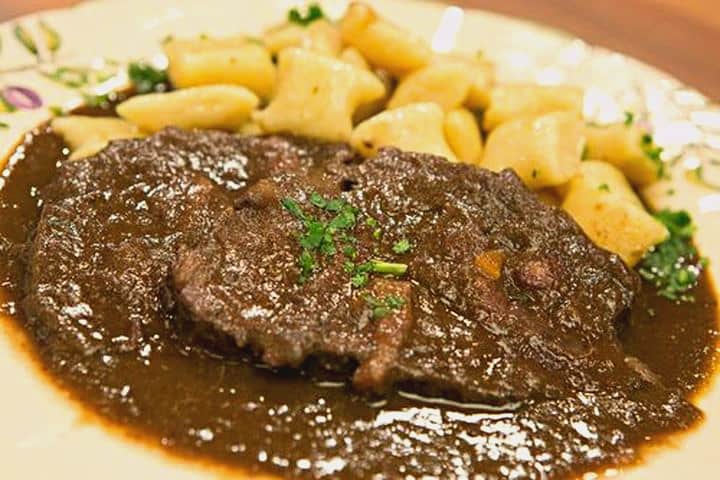
Pasticada, a traditional Dalmatian dish, comes to life when paired with Plavac Mali. This pairing highlights the rich flavors of both the food and the wine. The slow-cooked beef stewed in a special sauce made from wine, prunes, and herbs finds its perfect match in Plavac Mali’s robust body.
Its tannins cut through the richness of pasticada, enhancing each bite.
Cooking pasticada involves tenderizing beef with care and simmering it slowly to meld all the flavors together beautifully. It’s a no-brainer for a hearty meal like pašticada to be paired with a powerful red wine, but Plavac mali achieves a synergy unlike any other.
Pair your pašticada with: Stina Plavac Mali Majstor
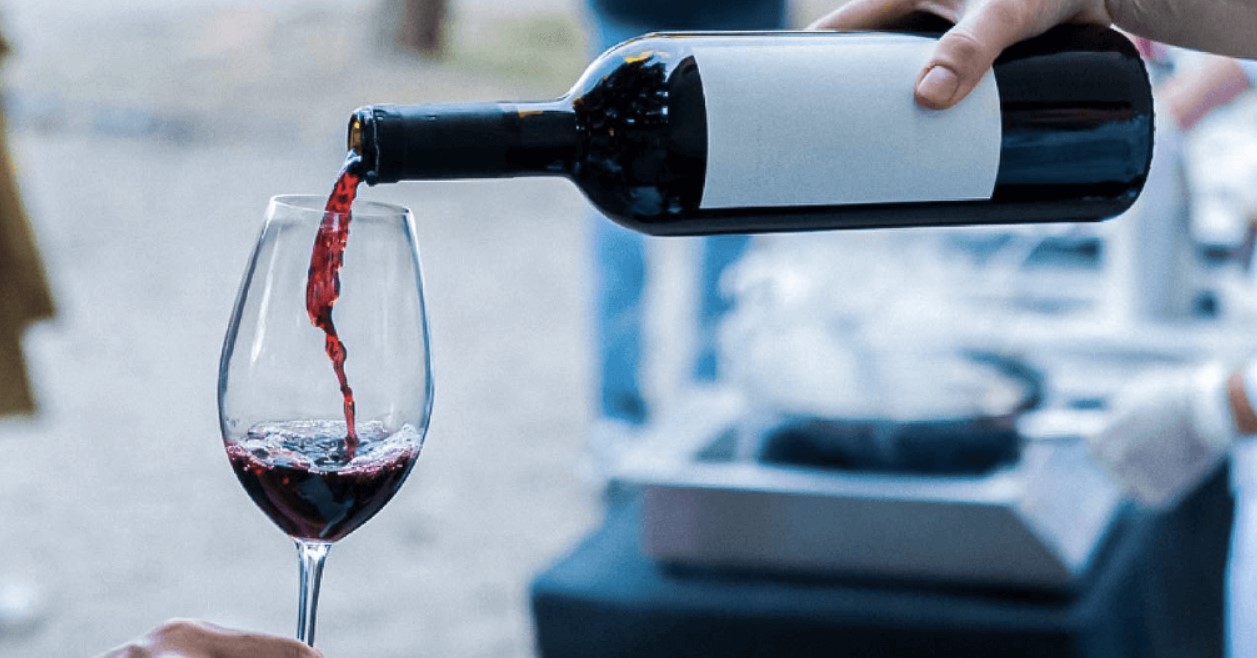
Soparnik with Vugava
Pairing Vugava with traditional Dalmatian meals such as Soparnik creates an unforgettable experience. Vugava is known for its aromatic flavors that perfectly complement the traditional Dalmatian savory pie, Soparnik, made with chard, garlic, olive oil, and other fresh ingredients.
This combination highlights authentic Dalmatian cuisine and winemaking in an ideal way.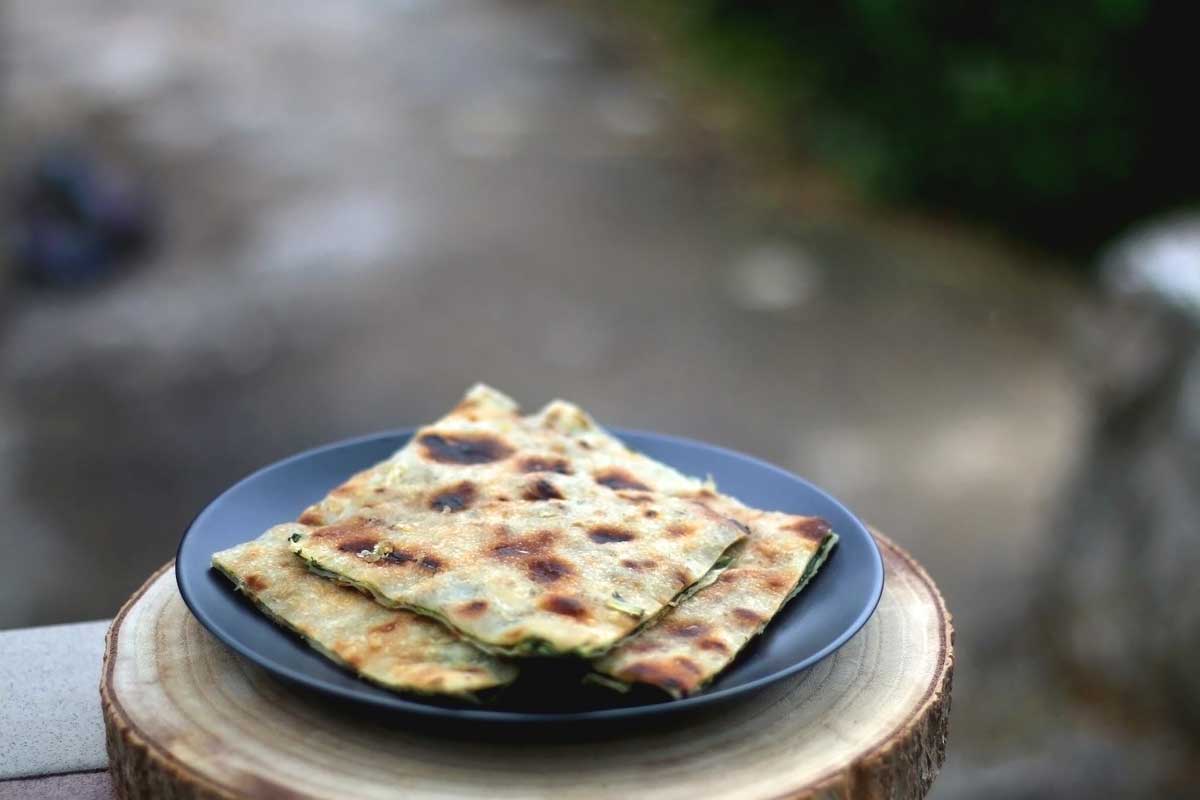
The unique qualities of Vugava wines, ranging from their bouquet to their dryness, enhance the vegetal flavor profile of Soparnik, making this pairing a favorite among locals and visitors alike.
Pair soparnik with: Stina Vugava
Dalmatian White Fish with Pošip
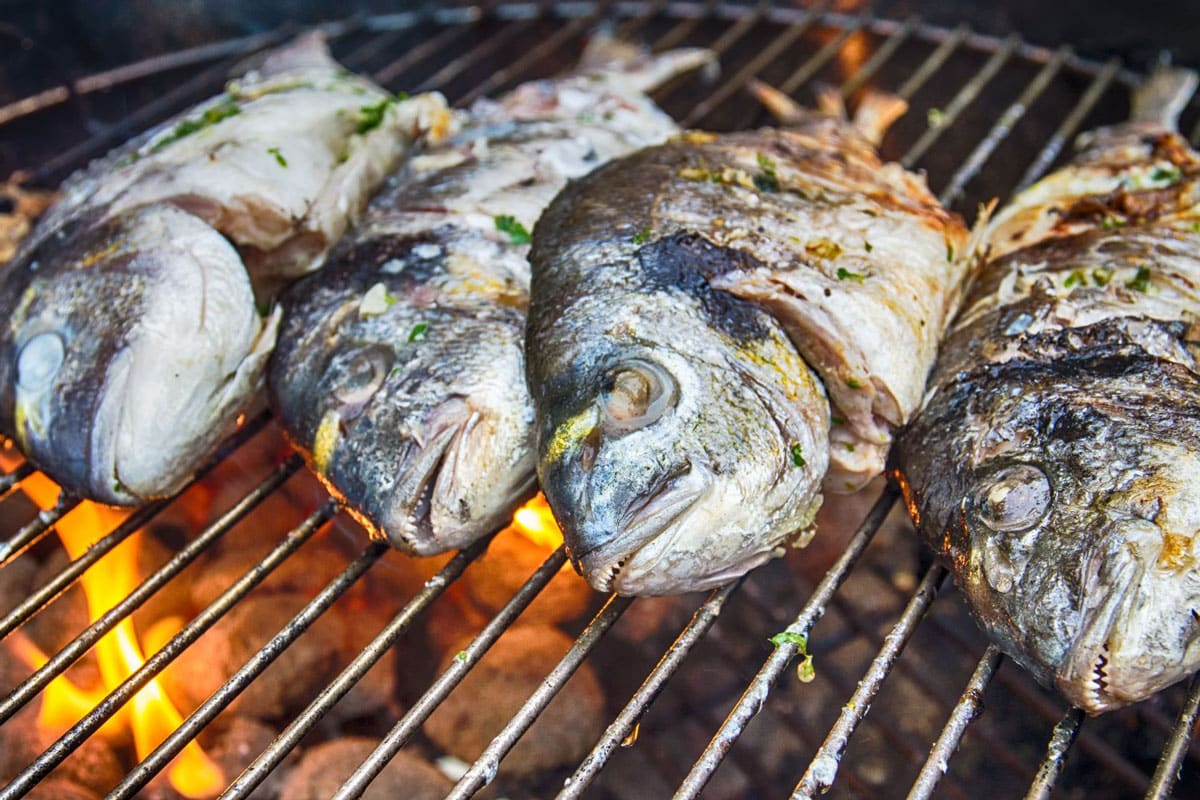
Pošip’s gentle acidity, combined with its medium to full body, provides a graceful balance to the fish’s delicate flavors. Its notes of citrus, ripe apple, and stone fruit brighten the natural juiciness of the ideally prepared fish, while the wine’s subtle minerality and whisper of Mediterranean herbs resonate with the smoky, caramelized edges of the grill.
Together, they create a symphony of flavors—pure, harmonious, and utterly satisfying—where the sea meets the vine in a perfect embrace. Usually, the true umami is achieved when the emulsion of olive oil, sea salt, and smoke is created on the plate. Tradition requests to use quality white bread to collect the juice and release the flavor in your bite.
A glass or two of Pošip will enhance the experience even further.
This combination enhances the natural flavors of each component, making every bite an unforgettable experience that celebrates Dalmatian ingredients at its finest.
Pair grilled whitefish with: Stina Pošip
Top Dalmatian Wineries to Visit
The best wines and the best wineries are not necessarily synonymous. However, in this case, visiting wineries for a tasting provides a unique insight into the region’s deep wine culture.
Kastel Sikuli

This notable winery produces quality wines and proudly contributes to the rich heritage of Dalmatian viticulture. For those eager to explore beyond just sipping wine, they provide a unique tasting experience, dedicated to gastronomic delights based on local food & wine.
With tours and tastings available, Kastel Sikuli offers a memorable journey through the flavors that define this region.
Close to Split, in the heart of Kaštela Bay, Kastel Sikuli captures the essence of Dalmatian winemaking tradition, offering an unforgettable exploration into quality wine experience. Dedicated to Crljenak (Tribidrag) and Pošip, this winery embodies the spirit and history ingrained within every bottle it crafts.
Stina Winery
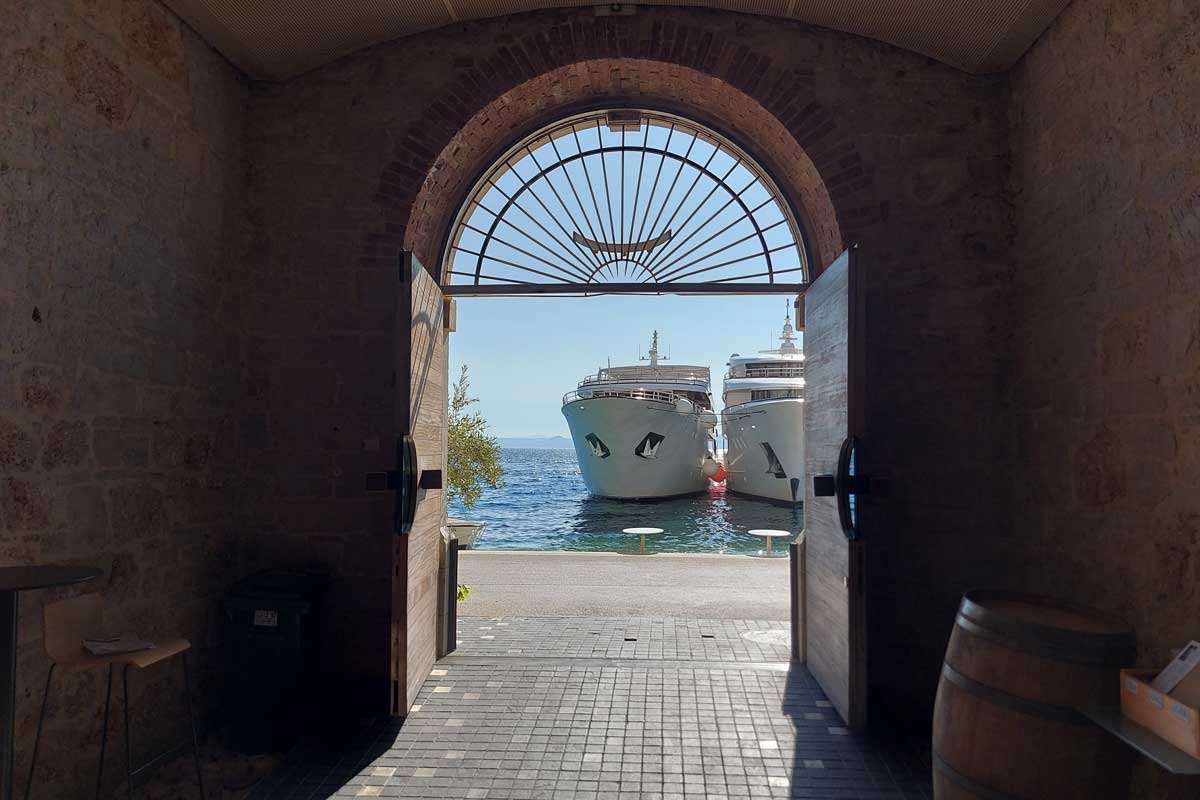
To indulge in a Plavac Mali, Tribidrag (Crljenak), Pošip, or Vugava, one need not travel far, as Stina inherits the facilities of old, on the very promenade by the sea right across the marina in the famous place Bol, on the Brač island.
They open their doors to wine lovers by offering tastings and tours, making it a must-visit for anyone eager to explore local varieties.
Their innovative approach extends to wine label designs, setting them apart in the marketplace. With labels as engaging as their wines, Stina Winery invites both seasoned connoisseurs and new enthusiasts into an experience that is as visually stunning as it is palatable.
This dedication showcases their commitment to quality while highlighting the rich vine-growing heritage of Dalmatia, encouraging visitors to explore its storied past with every sip.
Rizman
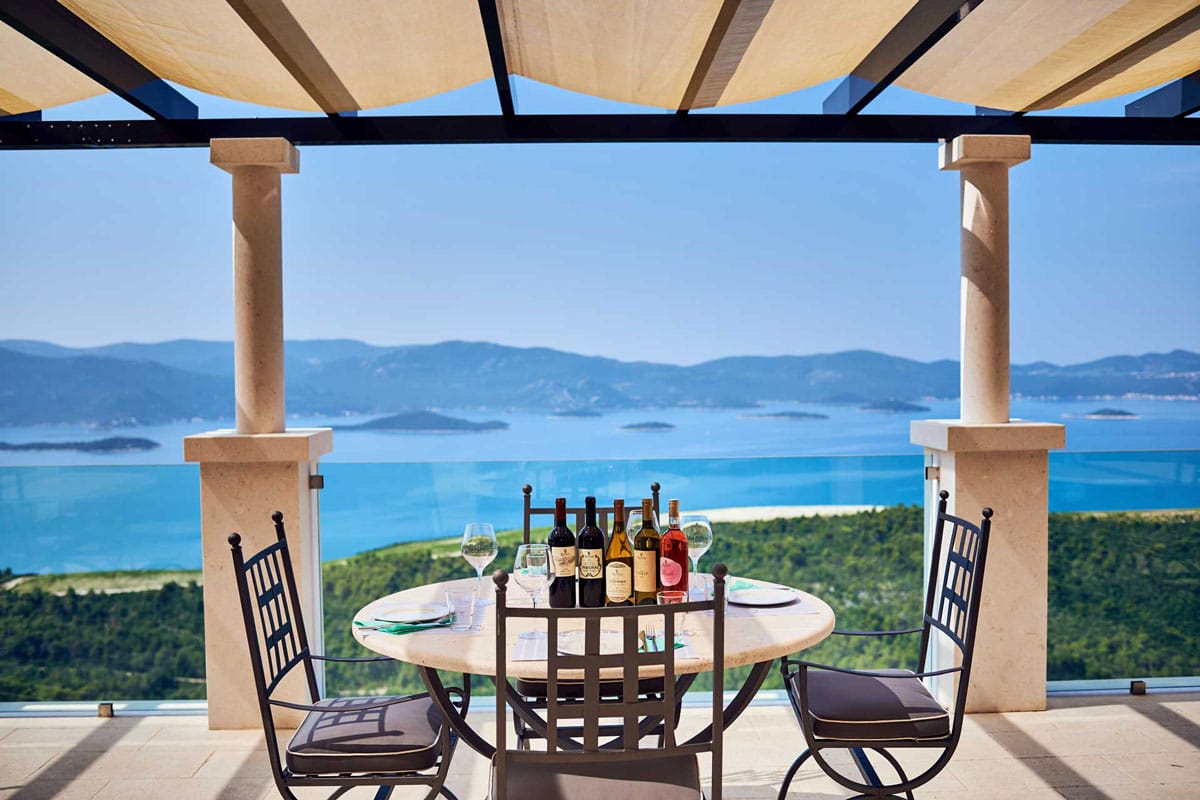
Placed above Komarna appellation overlooking Pelješac, olive groves, vineyards, and crystal canvas of endless blue Adriatic Sea, Rizman enchants everyone with the view.
However, the highlight is the exceptional wines of autochthonous varieties grown on the Komarna and made in the cellar.
On its sun-drenched outdoor terrace with a breathtaking panorama, you can savor the elegance of specialty wines like Rizman Pošip, a dry white wine with enchanting aromas of ripe yellow fruits, wildflowers, and citrus.
Open for wine tastings every day from April to November, the winery offers a range of curated experiences paired with delicious local delicacies, promising a true taste of the region.
For those who wish to extend their stay, newly opened rooms on the estate provide a serene escape, where the beauty of the vineyards and the charm of the sea are yours to enjoy from dawn to dusk.
Best Dalmatian Wines and Global Recognition
Dalmatian wines have earned awards and praise around the globe. They make a big splash on the international wine scene with their unique flavors and high quality.
Awards and accolades
Dalmatian wines stand out on the global stage, winning various international recognitions. These awards shine a light on the unique qualities and high standards of wines like Plavac Mali and Pošip.
With each award, more people around the world desire to try these exceptional varieties.
These celebrated wines have made their mark in competitions across continents. Recognition from prestigious wine contests and panels has helped increase the demand for Dalmatian wines internationally.
This recognition proves that Dalmatia’s wine-growing regions produce some of the finest bottles appreciated by connoisseurs globally.
Impact on the international wine scene
Dalmatian wines have carved a niche for themselves on the international stage. Their unique flavors and distinctive characteristics grab the attention of wine lovers around the globe.
This rise in global market presence showcases how these wines from Croatia’s coast are changing tastes and preferences worldwide. Wine enthusiasts now actively look for Dalmatian varieties such as Plavac Mali, Pošip, and Vugava when exploring new wine horizons.
The growing reputation of this region as a world-class wine producer is reflected in its increasing recognition at international awards and accolades. Such acknowledgments boost the curiosity among global consumers, driving them to discover more about Dalmatia’s rich wine culture and its offerings including delightful reds, refreshing whites, and aromatic rosés perfect for various cuisines.
FAQs
1. What makes Dalmatian wines special?
Dalmatian wines are unique because of their rich history and the diverse climates across the region. This area, known for its beautiful coastlines and ancient Roman influences like Diocletian’s Palace, produces wines with distinct flavors. This is due to numerous indigenous varieties. Grapes like Plavac Mali (related to Zinfandel) thrive here, creating exceptional dry wines and aromatic whites.
2. Can you tell me about a famous white wine from Dalmatia?
The most famous white wine from Dalmatia is Pošip. Pošip is a true gem that reflects the sunlit vineyards and the essence of the Mediterranean coast. Grown primarily on the idyllic island of Korčula, Pošip spread across Dalmatia. It is cherished for its vibrant character, offering a bouquet of ripe apricots, pears, and citrus blossoms, layered with a hint of Mediterranean herbs and a subtle touch of minerality. Pošip is also recognized as a structured white wine with aging potential.
4. What does “Vrhunsko Vino” mean when talking about Dalmatian wines?
“Vrhunsko Vino” translates to “premium wine” in English, indicating a high-quality wine that meets strict production standards in the Croatian wine scene. Wines labeled as Vrhunsko Vino are often among the best representations of their type, showcasing the ripest grapes fermented perfectly to capture the essence of Dalmatian terroir.
This practice, however, is proven to be obsolete in many cases where administrative procedures do not follow the real-life circumstances, so it is nothing more than a generic guide, not a rule.
5. How do winemakers in Dalmatia use modern techniques with traditional methods?
Winemakers in Dalmatia skillfully blend age-old traditions with modern vinification processes to enhance quality without losing authenticity. Techniques such as controlled fermentation using select yeast strains help preserve natural sugars while extracting maximum flavor from each grape variety like Bogdanusa or Kujundzusa.
6. Why should someone explore lesser-known varieties like Kujundžuša or Bogdanuša?
Exploring lesser-known varieties such as Kujundžuša or Bogdanuša offers an adventurous journey into unique tastes not found anywhere else in the world—each sip tells stories spanning centuries back to when our ancestors enjoyed these same varietals under Mediterranean skies by cities like Dubrovnik or Split.



















